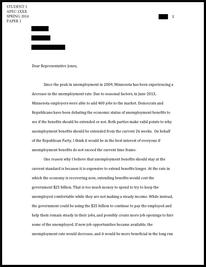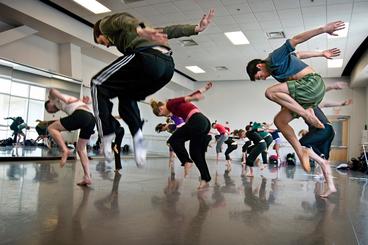
Working with Teaching Assistants
In classes with large enrollments and multiple sections, faculty members will often coordinate the work of teaching assistants as co-instructors; as lab, discussion, or recitation section leaders; or as reader/graders. Each of these roles requires careful coordination between teaching staff on expectations for writing and strategies for writing instruction.
Before the Semester Begins
Pre-Semester meeting: Establishing roles and goals
For all classes incorporating teaching assistants, it is important to establish roles related to writing instruction and the responsibilities that each role entails. What learning goals will the teaching assistants support? Who will develop the assignments and grading criteria? How will they be involved in commenting and grading on writing assignments? Will all teaching staff operate with the same schedule, deadlines, and course content, or is there room for independence? How do schedules change for sections that meet on different days of the week? What writing-related course policies will apply across all sections, and what additional resources are available?
Depending on the teaching contexts, teaching assistants may be heavily involved in preparing course activities (i.e., setting up labs) or may be heavily involved in non-writing assessments (i.e. conducting oral assessments of student language proficiency, scoring multiple-choice quizzes). Because writing instruction is critical in many courses, lead instructors can promote an effective culture of teaching by describing how those roles are balanced and integrated. Setting clear expectations for time commitment and forecasting the busiest times of the semester can help Teaching Assistants balance their development as scholars with their apprenticeship in teaching.
TA Workshops: Advice on commenting and grading
Many departments convene pre-semester workshops for teaching assistants that focus on commenting and grading student writing in their disciplines. These workshops help to clarify the relationships between courses in the undergraduate curriculum and help to clarify and emphasize writing standards and expectations in the department.
For departments who are involved in the WEC program, writing plans often describe both expectations for students’ abilities as writers and criteria for assessing student performance. In addition, de-identified student writing samples provide authentic student responses on common assignments.
The Teaching with Writing Program also hosts pre-semester workshops for teaching assistants (working with supervising instructors) and graduate instructors teaching stand-alone courses. Teaching assistants and graduate instructors have the opportunity to practice with writing samples from actual students in various disciplines and to work with writing specialists to develop specific grading and commenting strategies for your course. They also have opportunities to learn more about writing instruction across the curriculum and resources for writers at the University of Minnesota. Visit the Events page to view upcoming workshops.
Working with TAs during the semester
Regular meetings with instructional staff are crucial for both staff development and student learning in courses taught by multiple instructors. TA meetings can be used to reflect on the effectiveness of activities, to highlight common conceptual struggles or student misunderstandings, and to preview upcoming activities and assignments. If writing assignments were designed prior to the semester, these meetings can also facilitate a discussion of the learning goals for assignments and desired characteristics of students’ submissions.
As students in the course submit their work, lead instructor meetings with teaching assistants can also provide opportunities to ensure collective understanding of primary assignment objectives, share feedback strategies, and identify trends among students’ challenges. By identifying patterns of strength and weakness across groups, instructors can adapt their instructional activities and assessments.
When the time comes to grade student submissions, a grade-norming session can help to establish uniform standards across sections. Setting out explicit criteria in grading rubrics can be extremely useful in keeping grading practices tied to an assignment's stated objectives, and in keeping fatigued graders from responding unevenly to the work. Taking an hour or two to sit down as a group, grade a sampling of student writing, and then discuss the similarities and differences in these grades, can be helpful not only for grade norming but also for surfacing writing concerns that can be addressed in lecture or class sections.
Preparing a norming session
- Select a specific assignment that all participants are familiar with (or can quickly become familiar with). Make enough copies of the assignment to distribute to all participating instructors.
- If a grading rubric or guide is not included with the assignment, either create one in advance or plan to negotiate one in the group.
- Select at least two sample final drafts. Instructors should remove or obscure all identifying information about the student, instructor, and course, and make enough sets to distribute to each participant.
The session:
- Before reading the student samples, take a few minutes to ensure that the model assignment and rubric are understood. Make note of clarification questions, as they might be shared by students.
- Participants take time to grade and comment on the samples, either one at a time, or all at once. Allow 10 minutes or so per sample.
- Before launching into a discussion, survey all participants about the grades they have assigned so that an overall impression about the similarities and differences can be achieved prior to deliberations. These can be recorded on a whiteboard or in a spreadsheet to note areas of consensus and dissensus.
The ideal outcome of these discussions is that all instructors come to a sense of agreement about the features of students’ written texts and the scores that correspond to those textual features. If the graders are all over the map, it may be that they are not sticking to the rubric, or it could be that the rubric is not adequately clear. Often students and instructors might understand an assignment's expectations differently, and it is important to determine the causes of these differences. Perhaps the assignment's description lacked sufficient clarity? Perhaps the grading rubric contained generalized objectives, such as "clear, insightful prose…"? Perhaps participating instructors are swayed by preferences that are not outlined on the assignment? While the team may not reach unanimity, consistency in grading strategy eliminates a number of student concerns and fosters an equitable learning environment.
Staff members in the Writing Across the Curriculum program can serve as moderators and coordinators of norming sessions along with course supervisors. Including a teaching professional who is not attached to a particular class can help to clarify unstated expectations and develop a shared sense of what student success looks like on the page.
Working with TAs at the end of the semester
The final weeks of the term can be stressful. Students are eager for information about where they stand in the class. Their written tasks and assignment sheets tend to be longer and more complex. Teaching assistants are preparing their own final projects for coursework and are engaged in their own research. Two forms of support can be especially helpful for teams at this time.
First, consider blocking time to grade together. Just as an initial norming session can help to produce consistency, the opportunity to discuss close calls and complex cases can be tremendously valuable. Since students may not elect to collect their end-of-semester work, instructors can model commenting and grading strategies that emphasize efficiency rather than strategies that assist students in their subsequent drafts.
Second, collect information about patterns of strength and weakness in final assessments. This information can be helpful for considering course modifications, and it can also help instructors in future courses understand what students are bringing into their next classes.

